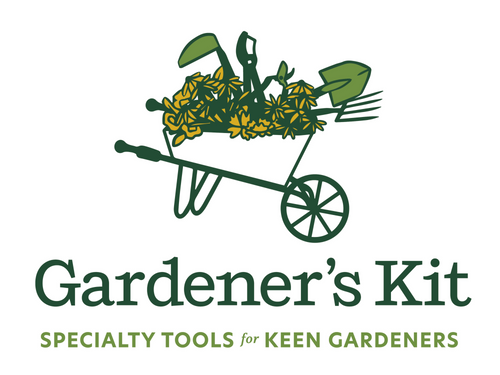Which Ladder?

Good question, hard to answer. Every garden, every gardener and every job is slightly different and what works for one might not work for another.
1. Best to start by thinking about your particular situation:
- what type of work will you use the ladder for?
- will you be pruning/reaching a wide variety and size of plant material?
- how tall is the material?
- how tall are you?
- how often will you use the ladder?
- what type of equipment will you be using?
- how comfortable are you on a ladder?
- how much weight can you comfortably carry?
2. Next, read the sections below on "size considerations" and "weight and maneuvering".
3. Finally, I recommend reading the detailed descriptions and lists of features for the two different models.
4. If you still have questions, please get in touch or visit one of our dealers to try out the ladders in person.
Size Considerations
Use the ‘Safe Standing Height’ (SSH) from this chart and combine it with your own height, and the height of the job (if you have a specific job you will use it for), to fairly accurately say what size ladder you will need. The safe standing height is three steps from the top on the taller ladders (10',12',16'); two steps from the top on the smaller models (6',8').
Using the 10 footer as an example: your safe standing height is on the 7th step, which means your feet are standing on a step 7' off the ground. Let’s say you’re 6′ tall, which means the top of your head is at 13′. If you are reaching to do pruning work you can comfortably reach to 14′ or so, arms outstretched. For hedge shearing, where ideally you want to be working between waist and chest height, you’ll have a working height of approx. 10-12′. Of course, it’s higher if you’re taller than 6′, and lower if you’re shorter.
Weight & Maneuvering
All the ladders are remarkably light, but they do get heavier as they get taller. They are wide at the base and much of the weight is on the wide bottom end. Moving them around in a confined space can be awkward and, depending on your height and strength, the taller ladders can feel top-heavy and will be more difficult to carry. Taller ladders have a sticker noting the balance point, which is the ideal place to carry the ladder if you are moving it alone.
Weights and complete measurements for each model and size are noted on the specifications chart.
Model descriptions and features
There are two different models: the original tripod ladder (pictured above on the left) and the platform tripod model (pictured above on the right). The design and safety features of the two models are identical except for the top few steps of the ladders.
The original model
The original model has steps straight to the top, one step per foot of height, with a deeper platform at the top that can be used to rest tools, picking baskets or other gear on. Model of choice for arborists, ideal for jobs where you need to work at different heights on the ladder and go up and down frequently.

Available sizes: 6’, 8’, 10’, 12’, 16’
Features
- no wobble due to the stable tripod design with extra-wide base
- extremely lightweight, made from hollow aluminum
- back leg is telescoping which allows you to keep the steps level when working on slopes and steps (robust spring-loaded pin adjusts quickly and easily up to 2 feet, in 6 inch increments)
- a safety chain attaches the back leg to the main frame (so the back leg will never slip out and collapse the ladder)
- safety chain can be unhooked to allow you to thread the back leg through the crown of a tree or into a hedge
- cupped feet do not sink into soft ground
- ANSI rated for commercial use, type 1A, 300 lb.
- all hand-welded (no screws or rivets which are common failure points)
- extruded aluminum construction is strong and weatherproof (does not rust)
- deep double rungs eliminate foot fatigue (you don't have to curl your toes around narrow rungs)
- open steps allow mud and water to fall to the ground so steps do not get slippery
- includes rubber shoes for use on hard surfaces or indoors (to prevent slipping or marking of hardscapes and floors)
- safety catch holds back leg in folded position for carrying
- full safety and user instructions included as factory fitted stickers
The platform model:
One step per foot of height, steps end at safe standing height (either 2 or 3 steps from the top, depending on size of ladder) – the last step is a deeper standing platform, and the upper portion of the ladder is a "crow’s nest" that you can lean into for added support and comfort. It also has an extra railing at the top. This model is ideal for jobs where you are standing on the ladder for long periods of time, and I often recommend it for people who aren't so comfortable on ladders. Or for companies that want to enforce safe standing height rules.

Available sizes: 6’, 8’, 10’, 12’
Features
- all the same design and safety features as for the original model (listed above)
- steps end at safe standing height
- ideal for jobs where you are standing on the ladder for long periods of time
- deeper standing platform supports your feet comfortably
- "crow's nest" structure provides added support and comfort, and eliminates the common complaint of bruised shins from leaning into the rungs
- extra railing at the top - use it to hang onto the ladder, or hang tools or picking bags from it
